Choosing a Road Bike (Quintana Roo SR6)
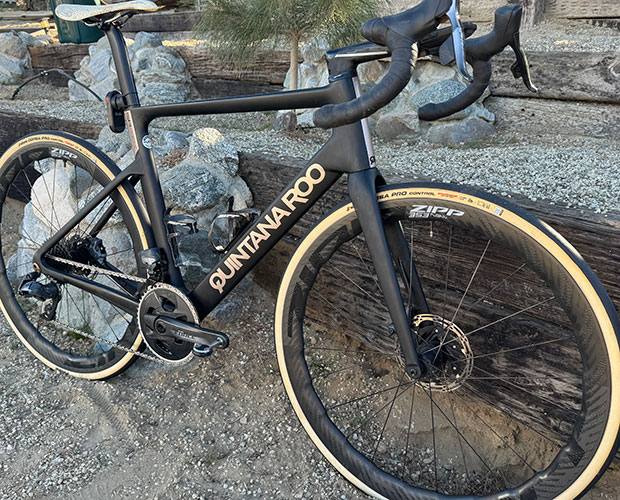
I didn't want to fumble my gravel bike purchase because it was my third in 5 years. It was getting expensive. I wanted this gravel bike to last me a long time. That was 4 years ago and I still believe I have the state of the art product for my own personal use. I suppose that’s the gold standard, whether you buy a house, a car, or when you choose a mate or a religion: Are you satisfied with your decision long after the new car smell wears off?
What about road bikes? I’ve purchased a pair of them over the last 3 years and they’ve been my tools of the trade. I use them to evaluate components, wheels, tires and so on for both SRAM- and a Shimano-compatible equipment and that’s why I have two: one’s Shimano, one’s SRAM. Here’s my process for choosing the first of these.
It was a Quintana Roo SR6, bought just about 3 years ago, and this is an aero road bike. I bought it because there’s a pretty standard race geometry for folks in my size with my posture aboard a bike: a stack and reach in size 58cm of 580mm and 400mm respectively. That’s the exact geometry of a Cannondale SystemSix in 58cm and notice that Cannondale does what QR does: They size their bikes based on the stack of each size. This makes sense for Cannondale, because a 58cm road bike that has a 58cm stack is typical (if it's "race" and not an "endurance" geometry).
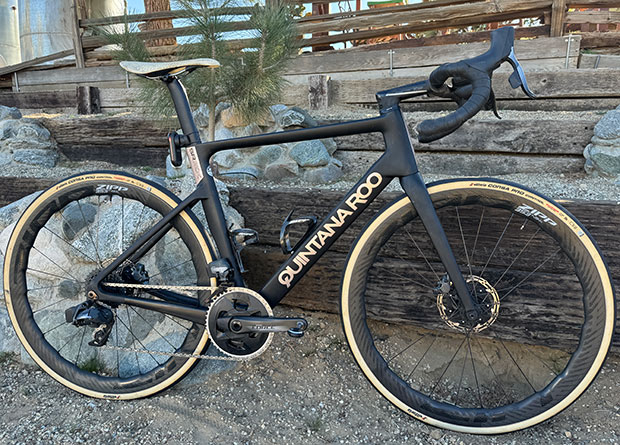
It’s just as precise but less intuitive for tri. I ride a 58cm road bike, because I need 58cm of stack in that bike. But tri bike frames have lower front ends for the same rider, and I would ride QR’s 54cm tri bike or, at most, a 56cm bike, because I need that lower front end. Folks who think a 58cm bike is always right for a person my height (6’2”) might feel funny buying a 54cm tri bike, but if your bike sizing means that stack = size then there you go.
QR uses stack and reach as design inputs, just like Cannondale. It’s the smart way to design a bike. One clue that a company knows what it’s doing is if stack and reach are design inputs and you know this is the case if stack and reach are even numbers for each size (e.g., if a bike model’s stack measures throughout the size run are, say, 50cm, 52cm, 54cm and so on). this is one reason I felt confident buying this SR6. That said, QR abandoned using stack as a naming convention for its road bikes. I ride a size Large in this bike, which has 580mm (or 58cm) of stack.
This is an aero road bike and I thought I should probably have one of these even though I’m suspicious of my ability to get these kinds of bikes to easily fit. The SR6 uses FSA’s ACR system, which is a stem that accepts the hydraulic brake line internally. The reason I’m okay with this is that I put a hydraulic quick-connect in line, and in my opinion the ideal is to run the hydraulic line outside the handlebar, underneath the handlebar tape, from the hood all the way along the bar until it’s ready to enter the stem.
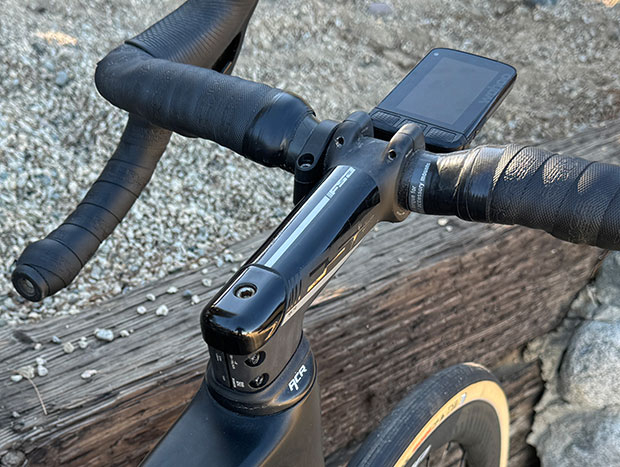
Then the hydraulic line can enter the handlebar just before it disappears inside the stem, and then the frame. While road and gravel bikes with completely internal hydraulic lines are notoriously hard to adjust for fit, I could buy this bike because the ACR system has many stem options. Any F.I.S.T. bike fitter who remembers what he or she learned here at our fit school knows how to calculate from the BB to the handlebar clamp, and this bike calcs such that the size L with a 120mm stem should hit my fit coordinates within a very few millimeters, height and length. So that’s what I ordered.
But sometimes there’s noise in the process, because of handlebar reach, the length of the hood, where the hood is placed on the hooks and so on. I found I was slightly tight in the cockpit after my first couple of rides on this bike, so I ordered up a 130mm stem and the bike fit like a glove. I didn’t have to pull out and rethread the hydraulic line to change the stem, because I had that quick connect in place. I used this one, but it’s notoriously hard to get, and I was just apprised of the existence of this one, but I haven’t had any personal experience with it yet. Yes, I could have just disconnected the hydraulic line from the shifter, pulled it through the handlebar and the stem, replaced the stem, and threaded it back to the shifter, but neither Shimano nor SRAM says its needle and olive are multi-use. (You get one bite a the apple or one crush of the olive, as it were.)
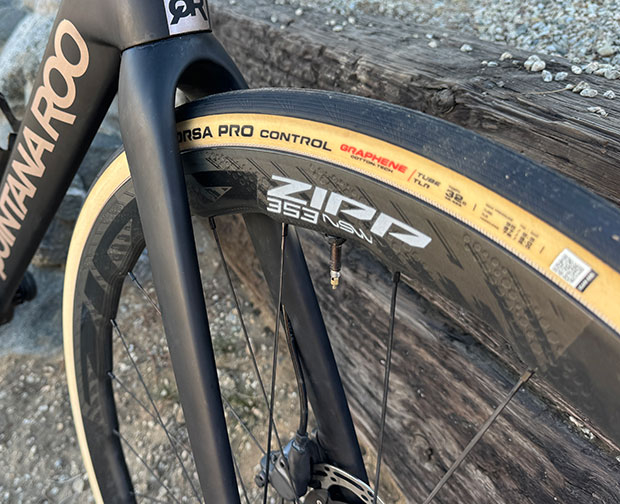
Why did I select SRAM for this bike? Because it’s a work tool. I can’t write about SRAM or test its products or products by other companies that mate with SRAM unless I have a bike operating on that platform. That established, there is a lot I like about SRAM and in a separate article I’ll contrast Shimano and SRAM as road group platforms.
Again, as with my gravel bike the very first consideration was capacity for tire clearance. The SR6 allows for something like 35mm tires and while I won’t go that wide the bike as you see here is shown with 32mm tires. You might wonder why so much tire clearance for an aero road bike and to that I have a couple of answers. First, a lot of aero bikes these days use very wide blades and stays, and for aero reasons (see BMC’s new road and tri bikes, and they are not the only ones). So, you by happy design get clearance with aero. Secondly, I have long had a habit of having 2 wheelsets for 1 road bike. One wheelset is “performance” (when I just have to reclaim that STRAVA segment!). The other is for my typical very knockabout riding. I do a lot of road rides in places and on surfaces where it would be easy to get a flat, or dent a rim, and/or get stranded. I have a set of 32mm tires on “allroad” wheels as my everyday road bike wheelset. I guess it’s hard to imagine a Zipp 353 NSW as an allroad wheel but it serves the purpose for this bike. These are Vittoria Corsa Pro Controls and for this tire in 32mm I would have to specifically seek out glass and thorns to have any hope of getting a flat. More on wheelsets in a future installment.
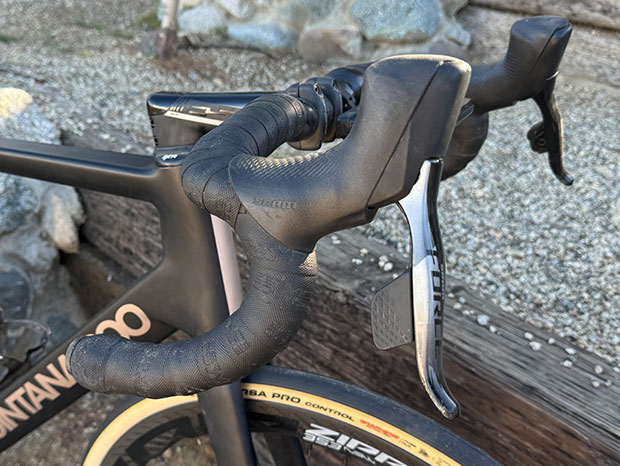
The point of what I’m writing is to establish a pattern for how I choose my bikes. You can choose yours however you want, and I won’t fault you. Just, in my case, I have pretty much no brand loyalty. I have function loyalty. I’m loyal – or tethered – to what works for me. It turns out that the same imperatives that drive my decisions in my gravel bike are what cause me to choose my road bikes: capacity to ride the tire (widths) I want; a frame that matches my fit coordinates; and the ability to change the front end of the bike to exactly match my fit coordinates. What about “ride quality.” Piffle. The two road bikes I chose are this Quintana Roo SR6 and a Cervelo R5 (upcoming installment) and while they don’t ride the same they each ride great. They each have “ride quality.” Any reviewer who refers to a frame’s inherent ride characteristics is probably blowing smoke up your skirt, unless there’s something pecular (peculiarly wrong) with that frame. A decade ago, yes, I rode some bikes that did not meet a standard, but today it’s very hard to find road bikes that don’t ride well. If they fit. When a frame doesn’t fit you; and when your bike’s contact points aren’t where they’re supposed to be, then the bike lacks ride quality for sure.
One more thing about this bike. The handlebars you see here are actually a set of FSA’s gravel handlebars. A lot of what I’ve learned to like about gravel riding has found its way onto my road bikes and handlebars are one of them. These aren’t radically gravel; they just have about a 5° flare. They’re narrower at the hoods, a little wider at the drops, than my typical road bars.


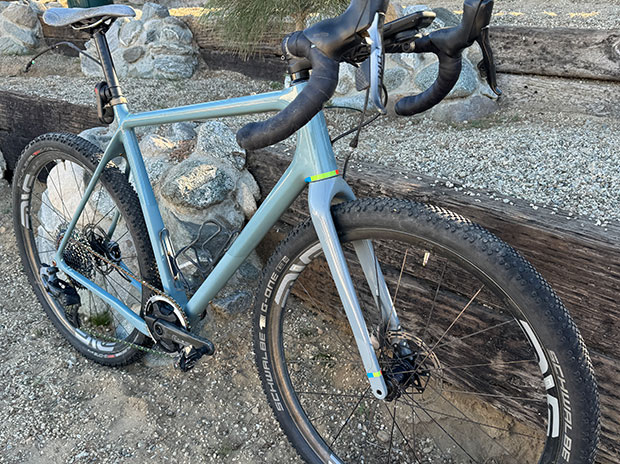
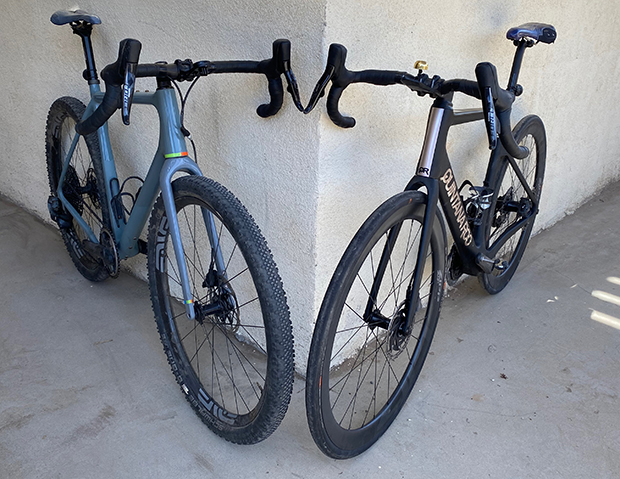
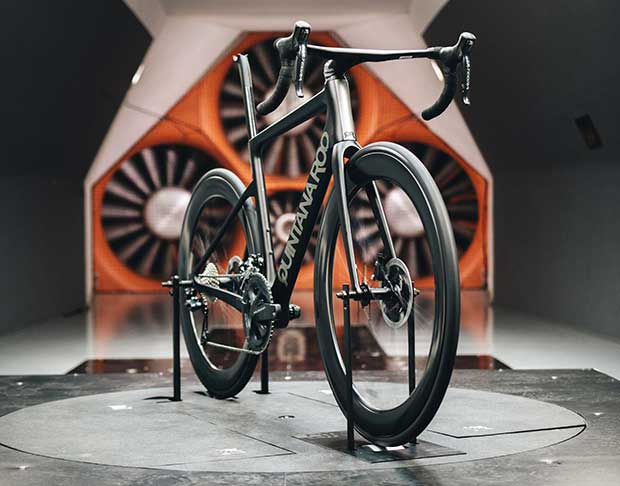
Start the discussion at slowtwitch.northend.network